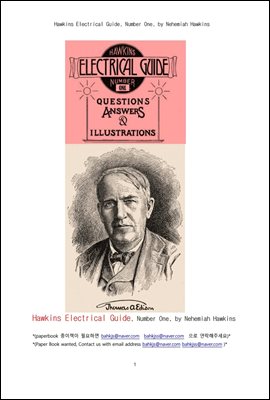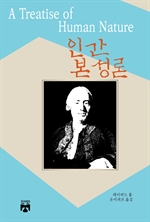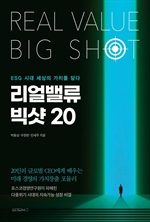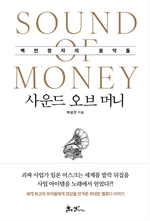
호킨스 전기의 안내서 (Hawkins Electrical Guide, Number One, by Nehemiah Hawkins)
- 저자N Hawkins 저
- 출판사뉴가출판사
- 출판일2020-01-13
- 등록일2020-12-21
- SNS공유


- 파일포맷PDF
- 파일크기21MB
- 공급사YES24
-
지원기기
PC
PHONE
TABLET
프로그램 수동설치
전자책 프로그램 수동설치 안내
아이폰, 아이패드, 안드로이드폰, 태블릿,
보유 1, 대출 0,
예약 0, 누적대출 5, 누적예약 0
책소개
호킨스 전기의 안내서.Hawkins Electrical Guide, Number One, by Nehemiah Hawkins호킨스의 전기 논문으로 전기에 대한 모든 것을 기록한책. 미국의 에디슨이 전기를 발견한후에 1914년도에 발달된 전기를 만든 안내 책자.
Hawkins Electrical Guide, Number One
Questions, Answers, & Illustrations, A Progressive Course
of Study for Engineers, Electricians, Students and Those
Desiring to acquire a Working Knowledge of Electricity and
its Applications
? Author: Nehemiah Hawkins
A PROGRESSIVE COURSE OF STUDY
FOR ENGINEERS, ELECTRICIANS, STUDENTS
AND THOSE DESIRING TO ACQUIRE A
WORKING KNOWLEDGE OF
ELECTRICITY AND ITS APPLICATIONS
A PRACTICAL TREATISE
by
HAWKINS AND STAFF
THEO. AUDEL & CO. 72 FIFTH AVE. NEW YORK.
COPYRIGHTED, 1914,
BY
THEO. AUDEL & CO.,
NEW YORK.
Printed in the United States.
목차
TABLE OF CONTENTS GUIDE NO. 1.INTRODUCTORY CHAPTER
SIGNS AND SYMBOLS
ELECTRICITY 1 to 4
Nature and source―kinds of electricity: static, current, dynamic,
radiated, positive, negative, atmospheric, frictional, resinous,
vitreous.
STATIC ELECTRICITY 5 to 26
Electrical attraction and repulsion―the charge―distribution of the
charge―free and bound electricity―conductors and insulators―
electroscopes―gold leaf electroscope―electric screens―
electrification by induction―nature of the induced charge―the
electrophorus―condensers; Leyden jar―electric machines―
action of Toepler- Holtz machine―Wimshurst machines.
THE ELECTRIC CURRENT
27 to
34
Volt―ampere―ohm―Ohm’s law―production of the electric
current―current strength―voltage drop in an electric current.
PRIMARY CELLS
35 to
67
The word “battery”―action of cell―chemical changes;
polarization―effects of polarization―methods of depolarization―
depolarizers―depolarizer bag―Volta’s contact law―contact
series of metals―laws of chemical action in cell―requirements of
a good cell―single and two fluid cells―the Leclanche cell―Fuller
bichromate cell―the Edison cell―Grenet bichromate cell―Daniell
cell―directions for making a Daniell cell―gravity cells―Daniell
gravity cell―so- called “ dry” cells―points relating to dry cells―
care of cells―cleanliness―separating the elements―creeping―
amalgamated zinc―battery connections.
CONDUCTORS AND INSULATORS
68 to
74
The so- called “ non- conductors” ―table of conductors and
insulators―mode of transmission―effect of heat―heating effect
of the current―insulators―impregnating compounds―water as a
conductor.
RESISTANCE AND CONDUCTIVITY
75 to
82
Standard of resistance―conductivity of metals and liquids―effect
of heat―laws of electrical resistance―conductivity―specific
conductivity―divided circuits.
ELECTRICAL AND MECHANICAL ENERGY
83 to
92
Definitions: energy, matter, molecule, work, foot- pound, volt?coulomb, ampere- hour, power, horse power, watt, kilowatt,
watt- hour―mechanical equivalent of heat―British thermal unit―
electrical horse power―the farad.
EFFECTS OF THE CURRENT
93 to
104
Thermal effect―use of heat from the current―magnetic effect―
chemical effect―electrolysis―electro- chemical series―electric
osmose―electric distillation―muscular contractions―
electroplating―electrotyping.
MAGNETISM
105 to
124
Two kinds of magnetism―nature of each―poles―magnetic
field―magnetic force―magnetic circuit―magnetic flux―the
Maxwell―the Gauss―magnetic effect of the current―corkscrew
rule―solenoids―permeability―magnetic saturation―
magnetomotive force―reluctance―analogy between electric and
magnetic circuits―hystereses―residual magnetism.
ELECTROMAGNETIC INDUCTION
125 to
136
Faraday’s discovery―Faraday’s machine―Faraday’s principle―
line of force―induction of current―laws of electromagnetic
induction―rules for direction of induced current―Fleming’s
rule―Ampere’s rule―the palm rule―self- induction.
INDUCTION COILS
137 to
154
Self- induction―mutual induction―primary induction coils―
secondary induction coils―plain secondary induction coils―
secondary induction coils with vibrator and condenser; cycle of
action―magnetic vibrators―vibrator adjustment―table of
induction coil dimensions―table of sparking distances in air―
points relating to induction coils―wiring diagram.
THE DYNAMO
155 to
160
Operation―essential parts―field magnets―armature―
construction of dynamos―parts; bed plate, field magnets,
armature, commutator, brushes.
THE DYNAMO: BASIC PRINCIPLES
161 to
170
Definitions―essential parts―elementary alternator―operation―
direction of induced current―application of Fleming’s rule―cycle
of operation―the sine curve; its construction and application.
THE DYNAMO: CURRENT COMMUTATION
171 to
180
How the current is produced―how direct current is obtained―the
commutator―inductors―“ continuous current” ―action of four
coil elementary dynamo―conditions for steadiness of the current.
CLASSES OF DYNAMO
181 to
198
Classification―bipolar and multi- polar dynamos―difference
between dynamo and magneto―self- exciting dynamo―the
series dynamo―regulation of series dynamo; difficulties
experienced―the shunt dynamo―adaptation―operation―
characteristic―regulation―the compound dynamo―service
intended for―regulation―over compounding―usual degree of
over compounding―short shunt―long shunt―voltage of short
and long shunt machines―separately excited dynamos―
Dobrowolski three wire dynamo.
FIELD MAGNETS
199 to
220
Object―essential parts―classes of field magnet―multi- polar
field magnets―construction―choice of materials―design―pole
pieces―eddy current―laminated fields―construction to reduce
reluctance of the magnetic circuit―magnetizing coils―methods
of winding―coil ends―insulation―attachment of coils―coil
connections―heating―ventilation.

















